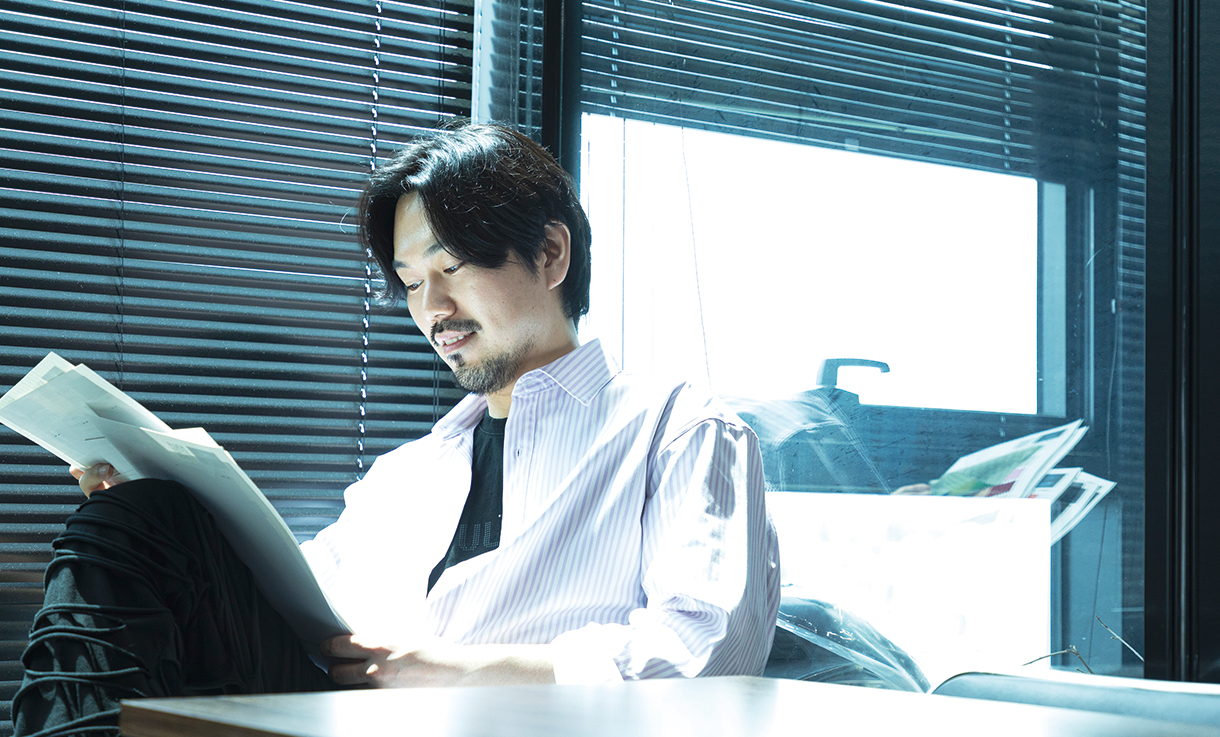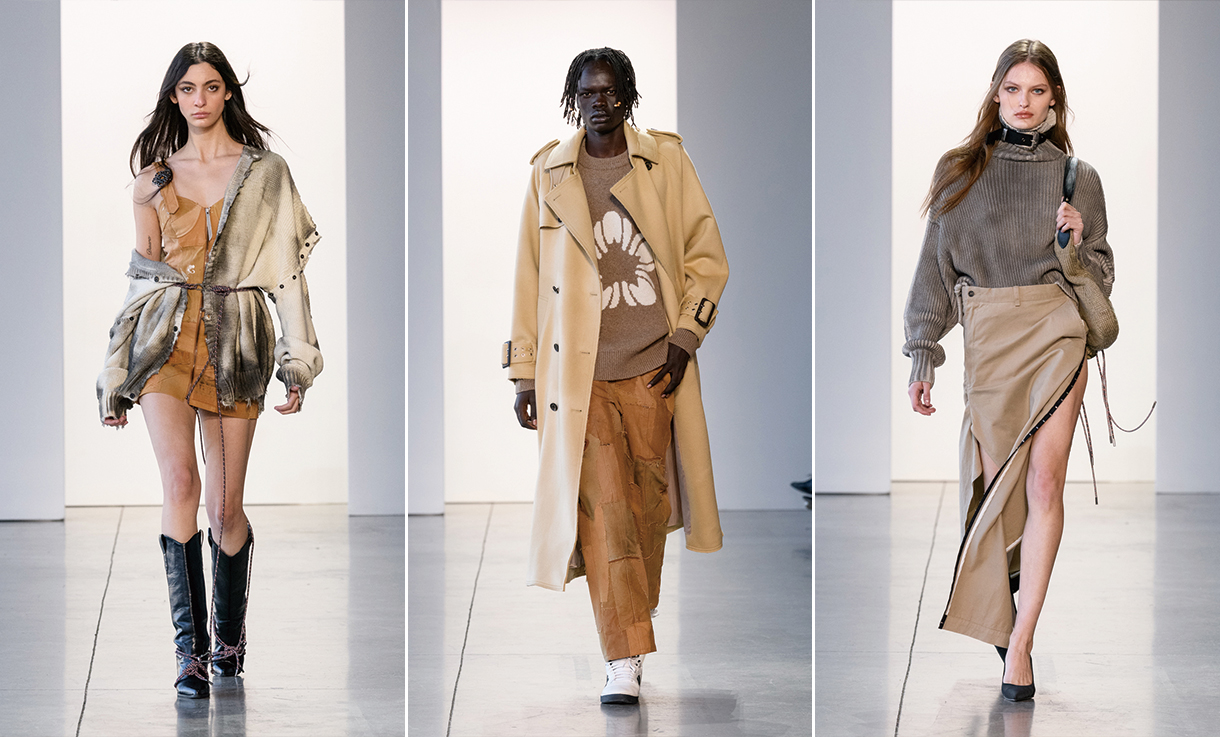

Story
버려진 재화에 새 생명 입히는
아티저널 업사이클링
Artisanal Upcycling,
Giving New Life to Discarded Items
‘옴니아트(OMNIART)’ 이성동 대표(의류학 07)
Lee Seongdong (Class of 2007 of the Department of Clothing & Textiles), CEO of “OMNIART”
- 글 김현지
- 사진 이현구
- Writing Kim Hyun-ji
- Photograph Lee Hyeon-gu
Scroll Down
With growing concerns regarding environmental problems across the globe, each industry is striving to find its own solutions. The fashion industry is no exception, because of its detrimental environmental footprint, including the use of polyester synthetic fibers amidst the rapidly changing fashion trends. Lee Seongdong, the CEO of OMNIART is looking for a new way to introduce eco-friendly fashion through upcycling.
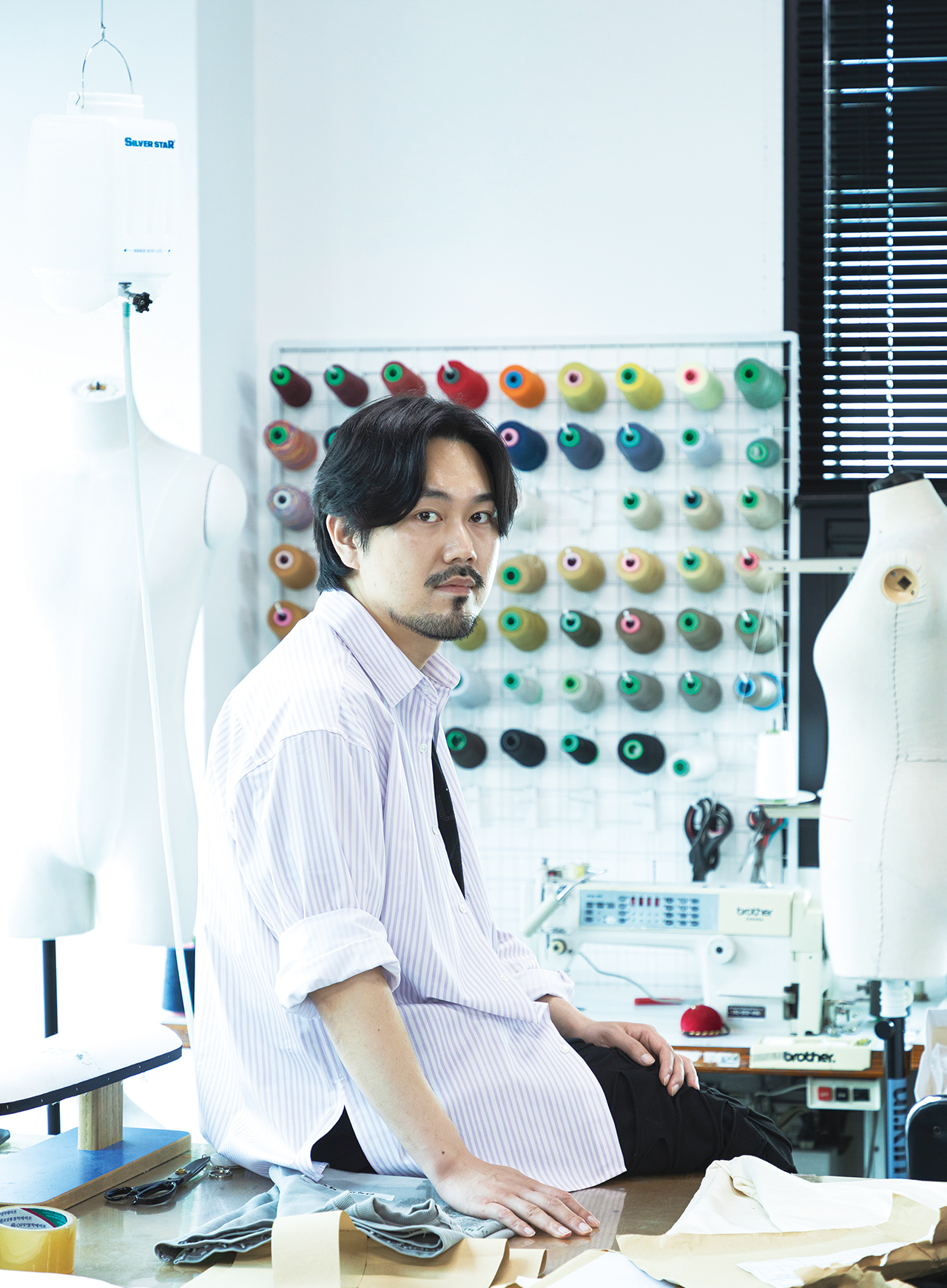
버려지는 회화 작품이 가방으로 탄생하다
2014년 디자이너 브랜드 ‘얼킨(ul:kin)’을 론칭한 이성동 대표는 남들과는 조금 다른 길을 걸어왔다. 단지 새로운 패션이 아니라, 새롭고도 지속가능한 가치를 지닌 패션을 선보이며 입지를 다져온 것이다. 이성동 대표는 단순한 재활용이 아니라 창의적인 재창조로 업사이클링의 가치를 높이고 있다.
“미술을 전공한 친한 친구의 졸업전시회에 갔다가 작가들의 습작이나 전시장 그림들이 대부분 버려진다는 이야기를 들었습니다. 창작의 고통을 아는 입장에서 아티스트들의 재능과 열정이 아무도 모르게 폐기되는 게 안타까웠습니다. 그때 ‘버려지는 그림들로 가방을 만들면 어떨까’하는 아이디어가 떠올랐죠. 일반 프린트보다 훨씬 멋진 아이템이 될 거라는 생각도 들었고요. 그래서 버려진 회화 작품을 활용해 가방을 만들었고, 이것이 얼킨의 지향점을 보여주는 시그니처 아이템이 됐습니다.”
얼킨은 버려질 뻔한 작가들의 캔버스 작업물을 패션 아이템으로 재창조하며 업사이클링 패션 브랜드로서 첫발을 내디뎠다. 수익의 일부는 직 · 간접적으로 다시 작가들을 지원하는 데 활용했다. 그렇게 ‘세상에 하나뿐인 나만의 가방’을 만드는 브랜드, 환경을 지키고 신진 작가들을 지원하는 가치 소비 브랜드로서 명성을 얻게 됐다. 하지만 머지않아 난관에 부딪혔다. 일일이 캔버스를 수거해 가공하는 데 생각보다 많은 시간과 노력이 필요한 탓이었다. 사업 확장에 어려움을 겪게 된 이성동 대표는 대량생산이 가능한 ‘아티스틱 라인’을 만들며 돌파구를 찾았다. 아티스틱 라인은 수거한 회화 작품의 이미지를 디지털화, 패턴화해 활용하며 리사이클링 원단에 패턴을 프린팅한다. 제품의 생산성과 활용도는 높이되 친환경 가치는 유지한 것이다. 이 덕분에 더 다양한 제품을 생산하고, 조금 더 많은 작가를 지원할 수 있게 됐다.
얼킨 브랜드의 사업 규모는 점점 커져 어느새 가방을 넘어 여성복과 남성복, 생활 잡화 등을 아우르는 토털 패션 브랜드로 자리 잡았다. 이에 이성동 대표는 2017년 ‘옴니아트’를 세우고 법인으로 전환했다. 옴니아트는 예술작품 등 지적재산을 상품화해 유통/판매하는 커머스 플랫폼을 지향하며, 2021년 ‘얼킨 캔버스’를 오픈했다. 시각 IP를 활용해 소비자가 작가들의 작품을 고르고 나만의 패션 제품을 만들게 하는 서비스다. 소비자가 직접 작가들의 라이선스 사용 권한을 사는 방식으로, 작가에게 더 많은 수익을 제공하려는 시도다. 현재 월 5만 명 이상이 웹사이트를 방문하고 있다.
Discarded paintings reborn as bags
Lee Seongdong, who launched his own designer brand “Ul:kin” in 2014, has pursued a career path that is slightly different from others. He has consolidated his position in the fashion industry by introducing fashion with not just new, but also sustainable, values.
He is improving the value of upcycling with creative recreation, instead of mere recycling.
“When I visited the graduation exhibition of my friend who was an arts major, I was told that most of the paintings exhibited get thrown away afterwards. As a person who deeply understood all the hard work and effort put into those artworks, the fact that the artists’ talent and passion get discarded like that really upset me. That’s when the idea of using discarded paintings to create bags came to me. I thought these bags would be far more amazing than other printed bags. After that, I started creating bags with discarded art paintings, and they eventually became Ul:kin’s signature item that perfectly reflects the brand’s values and goals.”
Ul:kin started off as an upcycling fashion brand that created fashion items from canvas paintings that would have otherwise been discarded. The brand used part of the profits earned to support artists, both directly and indirectly. And it began to earn its reputation as a brand that focuses on value-conscious consumption, creates “one and only bags,” protects the environment, and supports new artists at the same time. However, the brand encountered difficulties not long after. It turned out that collecting and processing canvas paintings took a lot more time and effort than previously thought. Lee, facing challenges in business expansion, found a breakthrough by creating the so-called “artistic line,” where mass-production became possible. The artistic line creates a digital version of patterns from the collected art pieces and prints them onto recycled fabric, which demonstrates enhanced productivity and efficiency while promoting environmental values. In this way, the brand was able to produce more diverse items and support more artists.
Ul:kin grew in size and eventually became a total fashion brand that not only sells bags, but also clothes for both men and women, and other miscellaneous goods. Lee Seongdong established “OMNIART” in 2017 as a company.
OMNIART aims to become a commerce platform that handles the distribution/selling of intellectual properties including art pieces, and launched “Ul:kin Canvas” in 2021. The Ul:kin Canvas service creates customized fashion items for consumers when they pick artists’ paintings with the help of visual IP. The intent of the service is to provide artists with more profit, as the consumers will directly purchase the right to use artists’ licenses. The website currently attracts more than 50,000 visitors per month.
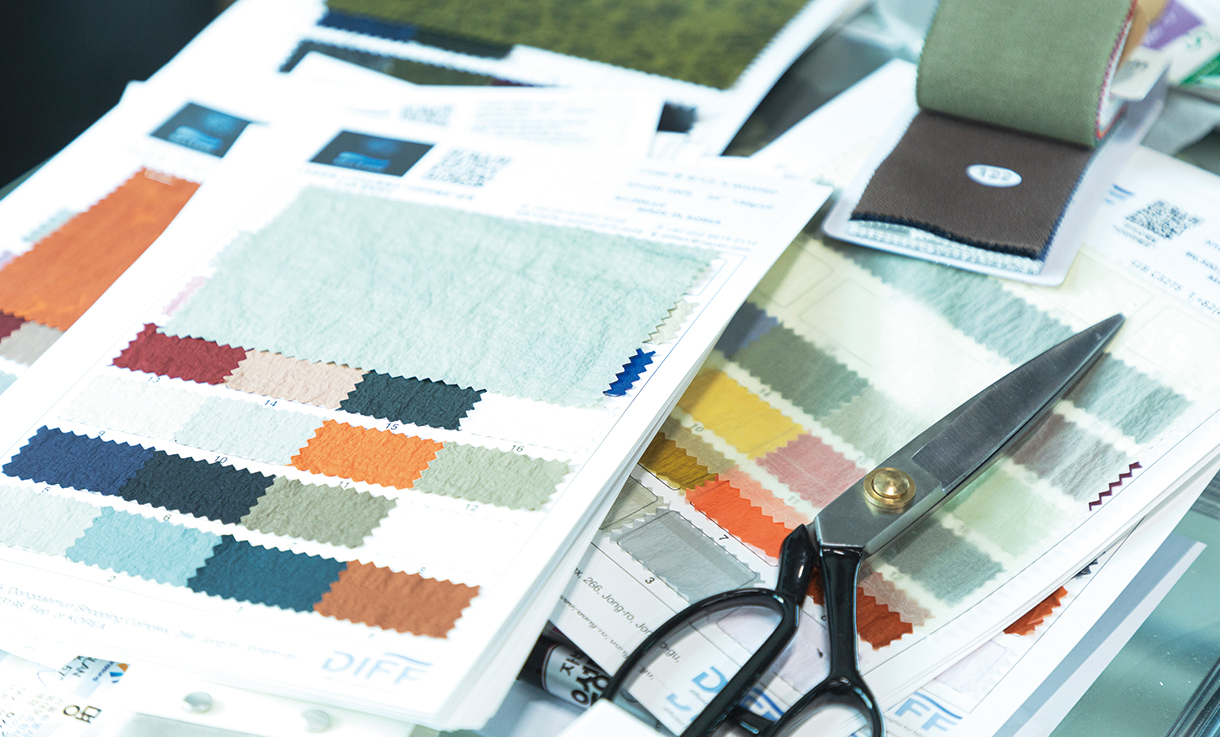
새로운 가치를 더하는 업사이클링
“사실 제가 얼킨 브랜드를 론칭하던 때만 해도 업사이클링은 그 개념조차 제대로 정착되지 않았었습니다. 최근에는 친환경 소재나 지속가능성에 부합하는 소재들이 많이 나오고 있지만, 그 당시에는 제품에 활용할 수 있는 지속가능 소재들이 많이 없었어요. 저희가 직접 발품을 팔아 발굴해야 했죠. 진짜 어려움이 많았습니다. 업사이클링은 버려진 재화를 재활용하는 리사이클링과는 엄연히 다릅니다. 재활용 차원을 넘어 새로운 가치를 더해야 해요.”
과거에도 환경 이슈는 있었고, 이성동 대표와 비슷한 시기에 업사이클링을 주제로 사업을 시작한 국내 기업들도 존재했다. 하지만 현재는 그 기업들이 거의 남아있지 않다. 여기서 알 수 있는 것은 뭘까. 그만큼 업사이클링 아이템을 발굴하고, 질 좋은 재료를 수급하고, 디자인과 생산 라인을 시스템화하는 것이 쉽지 않았다는 것이다. 이성동 대표는 패션의 경우 가치를 담는 것도 중요하지만, 무엇보다 패션 아이템으로서의 아이디어와 퀄리티가 뒷받침돼야 한다고 강조했다. 어려움을 헤치며 걸어온 지난 10년의 시간이 이성동 대표의 진정성을 보여준다.
얼킨 브랜드의 업사이클링은 기본적으로 ‘아티저널 업사이클링’이다. 해체와 재구성을 기반으로 장인 정신을 더한 패브릭 기법을 선보이는 것이다. 최근 유명 걸그룹 에스파의 멤버 윈터가 3번째 미니앨범 ‘MY WORLD’ 포트폴리오에서 입어 화제가 된 얼킨의 드레스가 대표적인 예다. 이 드레스는 수명이 다한 군복 바지 3장을 해체, 재구성해 만들어졌는데 전체적으로 컷아웃 퀄팅 디테일이 들어가 익숙한 듯 새롭다.
“아직은 업사이클링 제품이 잡화 라인에 집중돼 있습니다. 의류 쪽은 패션쇼를 통해 꾸준히 컬렉션을 선보이는 상황이죠. 추후 시판되는 의류에도 업사이클링 콘셉트를 적용해 갈 계획입니다. 현재도 리사이클링 원단이나 친환경 부자재, 친환경 국제 인증인 오코텍스(OEKOTEXⓇ) 인증 프린팅 등을 적용하며 저희가 생산하는 모든 제품의 지속가능성을 조금씩 확대, 강화해 가고 있습니다. 아티저널 업사이클링 작업 방식에 대한 연구와 고민, 재생 소재에 대한 발굴도 계속 진행 중입니다.”
New values added by upcycling
Lee Seongdong explains, “In fact, upcycling was not a well-known term when I first launched Ul:kin. Recently, many eco-friendly materials and materials for sustainability have been introduced; but back then there were not many sustainable materials that could be used for producing fashion items. We had to do the tiring legwork and find them ourselves one by one. It was a rough time indeed. Upcycling is completely different from recycling, which is about simply reusing thrown away goods, because it’s about reusing them and adding more value at the same time.”
Environmental issues have always existed, and there were a number of other domestic companies that started their business with “upcycling” as the main theme when Lee Seongdong launched his brand, Ul:kin. However, almost none of them exist today. What does this tell us? Simply put, looking for items to be used for upcycling, securing quality materials, and establishing a system for design and production lines are not easy. For Lee Seongdong, fashion meant more than just creating items that reflect environmental values. He emphasized that fashion items should be created with creative ideas and excellent quality. What he said demonstrates his authentic approach toward his work, and how he spent the past 10 years overcoming hardship.
Ul:kin’s concept of upcycling is basically “artisanal upcycling,” which uses fabric manipulation techniques with craftsmanship based on deconstruction and reconstruction. A representative example would be the Ul:kin dress that Winter, a member of the famous girl group Aespa, wore in the portfolio of their 3rd mini album, “MY WORLD.” The dress, made by deconstructing and reconstructing three pairs of worn-out military pants, has cut-out quilting details, which gives it a familiar, yet creative look.
Lee Seongdong explains further, “Upcycling products are still mostly limited to miscellaneous goods. For clothes, we continue to showcase our collections through fashion shows. Our plan is to apply the concept of upcycling to clothes for sale going forward. Even now, we have started to further promote and enhance our products’ sustainability by using sustainable textiles, eco-friendly subsidiary materials, and printing certified by OEKO-TEXⓇ, an international eco-friendly label. We are continuing to research ideas to improve ways of artisanal upcycling and find new sustainable materials.”
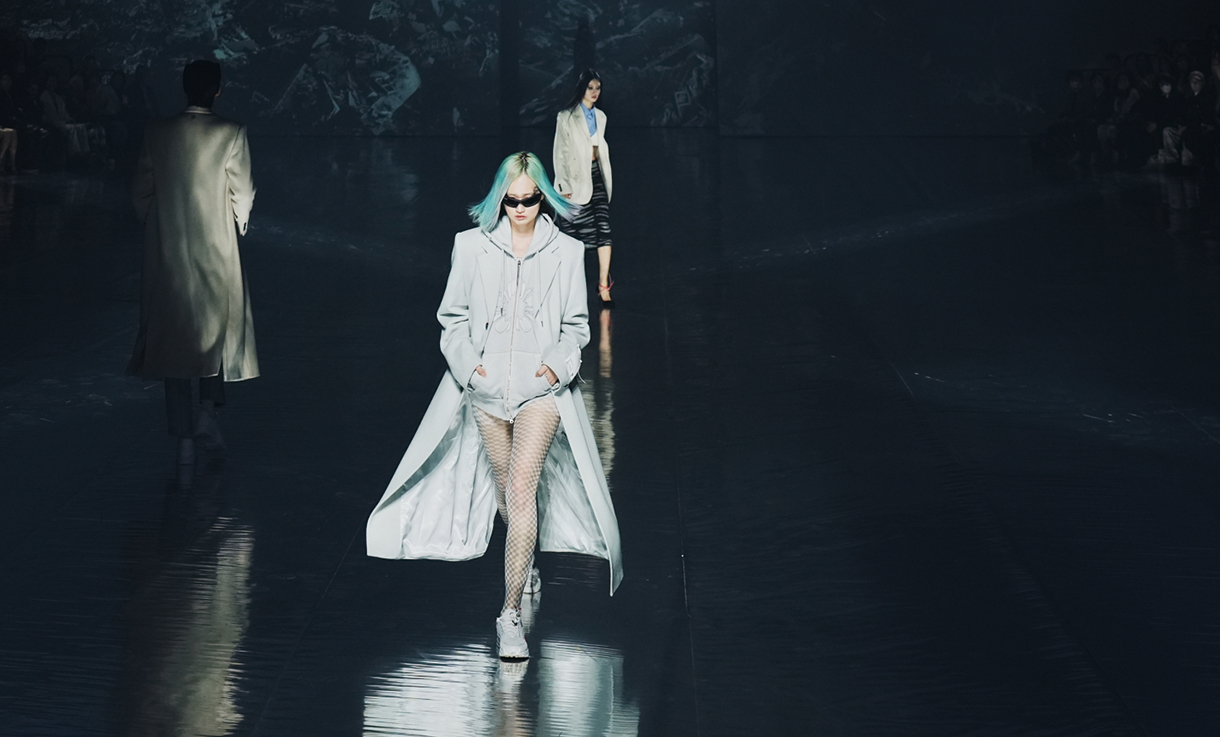
환경 문제는 이 시대를 살아가는 우리, 미래를 살아가야 할 젊은 세대에게 너무나 중요한 이슈다. 지속가능 패션에 대한 욕구는 가치 소비와 연결된다
Environmental issues are extremely important for the young generation, the drivers of the future. The growing interest being shown toward sustainable fashion is an example of their desire for value-conscious consumption.
글로벌 무대 위 K-업사이클링을 보여주다
이성동 대표는 늘 새로운 시도를 해왔다. 마그네틱 피싱(강이나 호수에서 강력한 자석을 물속에 넣고 수질오염의 원인이 되는 고철을 건져내는 친환경 활동)에서 영감을 받아 피셔맨 재킷이나 팬츠 등 아웃도어 요소를 활용한 컬렉션, 현장에서 버려지는 작업복이나 폐기물 등을 활용한 워크웨어 디테일 컬렉션 등으로 국내외의 이목을 집중시킨 바 있다. 패션계에서 인정받는 만큼 컨셉코리아, 서울 패션위크 같은 국내 무대뿐 아니라 뉴욕, 파리, 베를린, 코펜하겐 패션위크 등 다양한 글로벌 무대에서 얼킨만의 정체성을 담은 컬렉션을 선보였다. 지난해에는 한국디자이너 패션어워즈에서 최우수 패션디자이너상(대상)을 받았고, 2023 FW 서울 패션위크에서는 심사위원 최고 점수를 받으며 오프닝 무대를 빛냈다.
얼킨은 여러 기업과 협력하며 새로운 작업을 펼치고 있다. 2023 SS 뉴욕과 파리 패션위크에서는 이수그룹과 컬래버레이션한 가방을 선보여 큰 호평을 얻었다. 건축폐기물의 일부라도 업사이클링해보자는 취지로 진행된 프로젝트였다. 아파트 건축 공사 시 안전을 위해 사용하는 수직 보호망으로 호보백과 백팩, 토트백 등의 가방을 제작했는데, 독특한 디자인은 물론 사용성까지 좋다는 평가를 받았다.
시장조사업체 리서치앤드마켓은 2019년 63억 5,000만 달러(약 8조 4,000억 원)였던 글로벌 지속가능 패션 시장이 올해는 82억 5,000만 달러(약 11조 원) 규모로 성장하리라 전망했다. 이성동 대표가 이끄는 옴니아트 역시 매출이 가파르게 성장하고 있다. 올해 1분기에 벌써 지난해 매출의 절반을 달성했다. 지속가능 패션, ‘재생 패션’이 이렇게 주목받는 이유가 뭘까?
“요즘 젊은 세대, 흔히 말하는 MZ세대는 자신을 어떤 모습으로 정의할 것인지, 어떤 의사결정을 해나갈 것인지를 중요하게 생각하는 세대입니다. 그래서 가치 소비에 더 관심을 두고 실천하려 노력하죠. 지속가능한 패션에 대한 욕구 역시 이런 가치 소비의 일환입니다. 또 예전보다 환경 위기에 대한 이야기들이 미디어를 통해 더 많이, 반복적으로 제시된 영향도 있을 겁니다. 환경 문제는 이 시대를 살아가는 우리, 미래를 살아가야 할 젊은 세대에게 너무나 중요한 이슈니까요.”
이성동 대표는 지속가능 패션을 논할 때 당연하게 옴니아트의 얼킨 브랜드가 떠오르도록 업사이클링 활동을 더욱더 확장하고 고도화하고 싶다고 밝혔다. 우리나라 패션계에 긍정적인 영향을 미치는 브랜드, 세계에 한국의 패션을 알리는 선두주자가 되는 것이 최종 목표다.
“얼킨에는 ‘얽히고설키다’라는 뜻과 ‘Ultimately, We are Kin(궁극적으로 우리는 하나)’이라는 의미가 담겨 있습니다. 예술과 패션이 하나가 되고, 자원과 재능이 끊임없이 선순환하는 것을 나타내죠. 아티스트와 상생하는 업사이클링 패션, 세상에 좋은 영향을 미치는 ESG 패션의 새로운 장을 열어가고 싶습니다.”
Showcasing K-upcycling at a global level
Lee Seongdong has never been afraid to take risks and enjoy adventure. He has drawn much interest from home and abroad by introducing a collection of fisherman jackets, pants, and other outdoor clothes inspired by magnetic fishing (an eco-friendly activity for catching scrap metal, a cause of water pollution, from the rivers and lakes with powerful magnets) and workwear collections using discarded working clothes and waste. While gaining recognition in the fashion industry, Ul:kin introduced its collections that reflect the brand’s unique identity at not only Korean fashion shows including Concept Korea and Seoul Fashion Week, but also fashion shows held in New York, Paris, Berlin and Copenhagen. Lee was awarded the grand prize at last year’s Korea Designer Fashion Awards, and graced the opening stage of the 2023 FW Seoul Fashion Week by being awarded the highest score by the judges.
Ul:kin is also introducing new items in collaboration with various businesses. The brand earned rave reviews for the bags it introduced in collaboration with Isu Group at the 2023 SS Fashion Week held in New York and Paris. The project was initiated with the purpose to attempt upcycling of items that can be upcycled with construction waste. Joining hands with Isu Group, Ul:kin created hobo bags, backpacks, and tote bags with the vertical safety-nets used for construction of apartments, which received positive reviews for their unique design and functional value.
Research & Market, a market research agency, projected that the size of the global sustainable fashion market will grow to US$8.25 billion dollars (around KRW 11 trillion) this year from 2019’s figure of US$6.35 billion (around KRW 8.4 trillion). The revenue of Ul:kin, led by CEO Lee Seongdong, is also sharply increasing. The brand has already earned half of last year’s revenue just within the first quarter of this year. Why, then, is the sustainable fashion, or “renewable fashion,” attracting so much interest?
“For the young generation, or the MZ generation, defining who they are and what decisions they want to make is more important than ever. That’s why they are more interested in value-conscious consumption and putting it into practice. Interest in sustainable fashion is an example of their desire for value-conscious consumption. Another reason is that we see more stories about environmental crises on the news now more than ever, and also on a recurring basis. This is because environmental problems have become a critical issue for the young generation, the drivers of the future, to tackle and resolve.”
Lee added that he would continue to expand and advance upcycling activities so that OMNIART’s Ul:kin becomes the first brand that comes to mind when people think of sustainable fashion. His ultimate goal is to have Ul:kin become a brand that has a positive impact on Korea’s fashion industry, and stands at the forefront of promoting Korean fashion at a global level.
“The name Ul:kin is a combination of the Korean meaning of “being entwined and entangled,” and “Ultimately, We are Kin.” This means that art and fashion will eventually become one, and the formation of a virtuous cycle of resources and talent. With Ul:kin, I want to open a new chapter of ESG fashion that has a positive impact on the world and upcycling fashion, and form win-win relationships with artists.”
